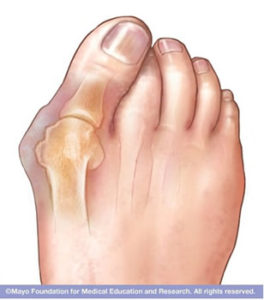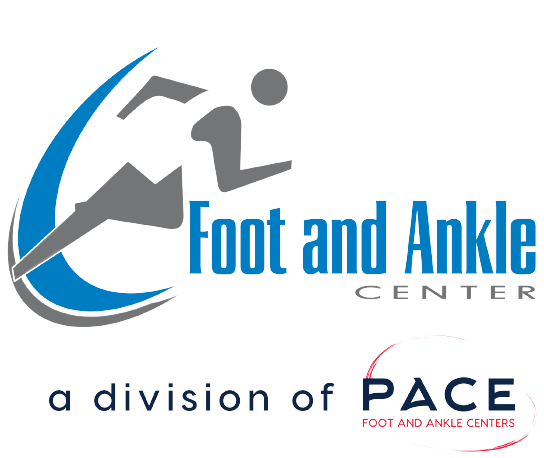Bunion Care
Bunions
A bunion is a mal-alignment of the great toe joint. To the eye, it appears as a bulging, bony bump on the joint at the base of your big toe. Bunions form when your big toe pushes up against your other toes, forcing your big toe joint away from the normal shape of your foot, enlarging the joint, and crowding your other toes, sometimes causing pain.
Bunions are almost always caused from a hereditary component. Wearing shoes that fit too tightly is not a cause of a bunion and more of an aggravating factor. Bunions can also develop as a result of trauma or a medical condition, such as rheumatoid arthritis or gout.
 Symptoms
Symptoms
The signs and symptoms of a bunion include:
- A bulging bump on the base of your big toe
- Swelling, redness or soreness around your big toe joint
- Thickening of the skin at the base of your big toe
- Corns or calluses, often where the first and second toes overlap
- Pain
- Restricted movement of your big toe
- Pain with shoe gear
Causes
- Inherited foot type
- Trauma
- Arthritis
Treatments and Drugs
Treatment options vary depending on the severity of your bunion and the amount of pain it causes you.
Conservative Treatment
- Nonsurgical treatments that may relieve the pain and pressure of a bunion include:
- Changing shoes design that provides plenty of space for your toes.
- Having the toe box of the shoe stretched.
- Padding/straps and gel spacers.
- Medications such as anti-inflammatories
- Cortisone injections
- Shoe inserts. Padded shoe inserts or over-the-counter arch supports can provide relief along with prescription orthotic devices.
Surgical options
Surgery is only recommended for patients that are in pain. Cosmetic bunion corrections are not recommended. A number of surgical procedures are performed for bunions. Surgical correction is based on severity of deformity, arthritic changes in the joint, mobility of the joint and age of patient. Post-operative recovery time depends on the procedure completed.

